Vieux-Montréal
I may have mentioned before (just once or twice) that my favourite way to get to know a city is by walking it.
I may have also mentioned (just, erm, once or twice) that I’m a history geek. And so, getting to know Vieux-Montréal (Old Montreal) last May by walking it was a real treat for me. Like a moth to a flame, I set out on my first day for the oldest part of Montreal.
I should make it clear that when I say “oldest part,” I am referring to the part of Montreal first settled by Europeans. Long before the first Frenchman arrived on what we now call the island of Montreal, Indigenous peoples were living there. They called their settlement Hochelaga. That first Frenchman was Jacques Cartier, and he in turn named the mountain near Hochelaga Mount Royal, or, in sixteenth-century French, Mont Réal. That was in 1535.
The first French settlers, about 50 of them, arrived in 1642. They were led by Paul de Chomedey de Maisonneuve and Jeanne Mance, who are considered the co-founders of Montreal. Their interest was evangelical; they intended to convert the Indigenous peoples to Christianity. However, the fur trade soon became the focus of the new colony. To protect the French interests, Louis XIV sent over 1200 French soldiers. The Filles du Roi (the King’s Daughters) followed, also sent out by Louis XIV, to provide wives for all those fur traders and soldiers. And with that, it could be said, the colony of New France was off to the races.
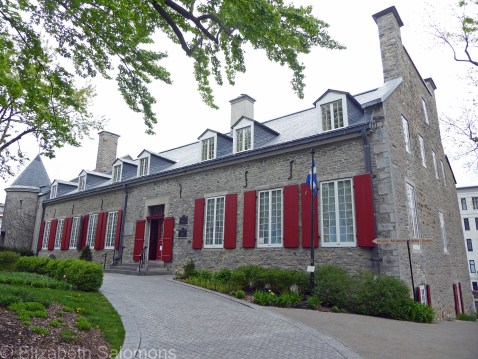
Colonies need governors, and the building in the above photo, Château Ramezay, was the home of one of the early governors of Montreal, a chap named Claude de Ramezay. Built in 1705, it is one of Montreal’s oldest buildings and is located on Place Jacques-Cartier, the centre of Vieux-Montréal. The house was sold by his descendants, and at one time served as the Canadian headquarters of the Continental Army (that would be the army of the American colonials who fought the British during the American Revolution). It is said that Benjamin Franklin was a one-time guest in this house in 1776 when he came looking for military help from New France in the way of soldiers.
Eventually, the château was turned into a museum, which it remains today. The restored gardens behind the château are particularly lovely.
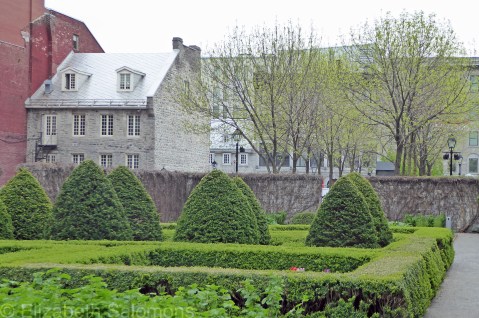
This next house, Maison du Calvet, was built in the 1700s. It looks like it was lifted right out of Brittany. Most recently, it’s been a hotel, but at one time it was the home of Pierre du Calvet, a supporter of the American Revolution. He also met with Benjamin Franklin when he came to New France.
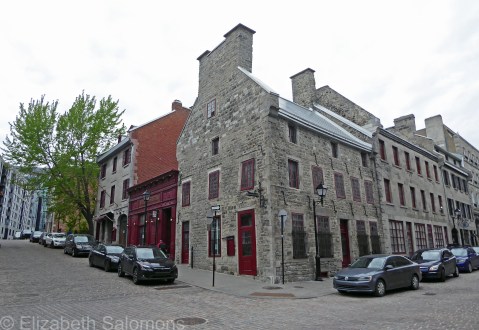
Across the street from Maison du Calvet is this church, Chapelle Notre-Dame-de-Bon-Secours (Our Lady of Good Help Chapel). Founded in 1655 by St. Marguerite Bourgeoys, it’s one of the oldest churches in Montreal. This building dates from 1771. The chapel became popular with the sailors who came through the port of Montreal.
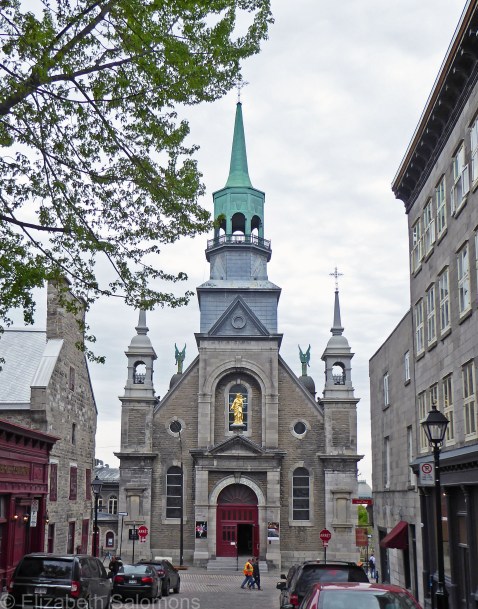
Speaking of sailors, this next building is the Old Custom House, which served a significant function in the burgeoning Montreal trade. When the city was declared an official point of entry for Lower Canada in 1832, it needed some administrative buildings, and this one was completed in 1838. It has two facades; this side faces the Saint Lawrence River. The building is now part of Montreal’s Museum of Archaeology and History.

What I like about this photo is how it shows several centuries of architectural style: directly behind the customs house are the spires of Notre-Dame Basilica (completed shortly before the customs house), behind it to the right is the Aldred Building, built in the Art Deco style and finished in 1931, and behind it to the left is the nondescript bank tower that went up in the 1960s.
Marché Bonsecours (Bonsecours Market), below, was the public market of Montreal for more than 100 years after its completion in 1847. It also housed the Parliament of the Province of Canada in 1849 and served as Montreal’s City Hall from 1852 to 1878. It is said to have been modelled after the Custom House in Dublin, which speaks to the long history of the Irish in Montreal. The building is now home to restaurants and shops, banquet rooms, and offices.
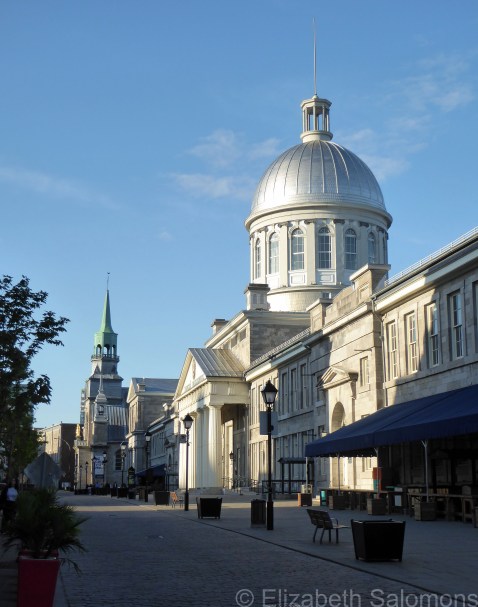
Here is Montreal’s current Hôtel de Ville (City Hall). It was built in the Second Empire style between 1872 and 1878. For those of us who are familiar with Quebec history, it was from this building’s balcony that Charles de Gaulle, president of France, gave his infamous speech in 1967. He proclaimed “vive le Québec libre,” which then became a rallying cry for the Quebec separatist movement of the late twentieth century.

Thankfully, the movement did not succeed and Quebec is still part of Canada. And we are the richer for it.

Trackbacks / Pingbacks